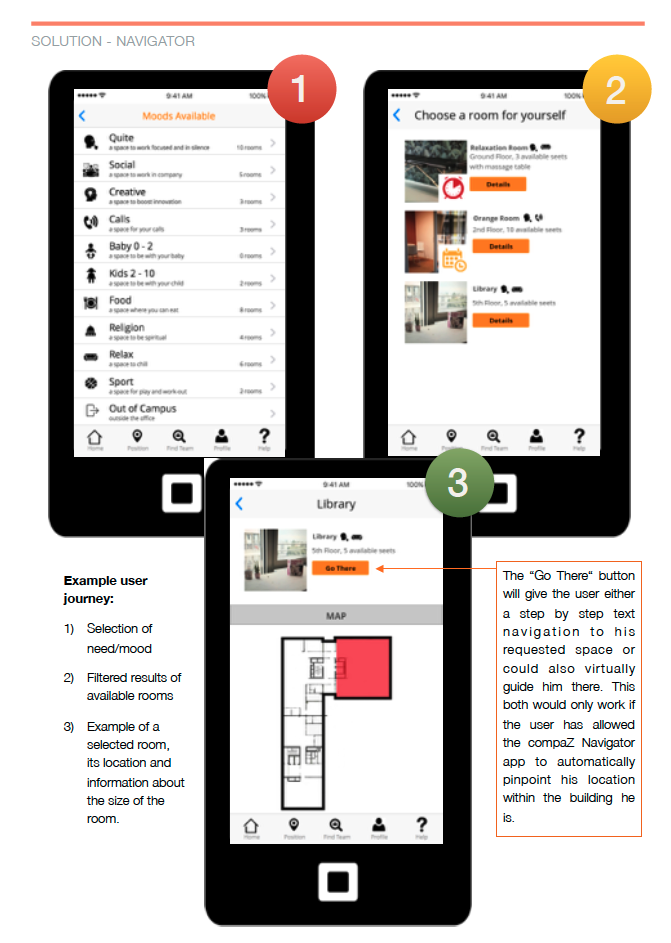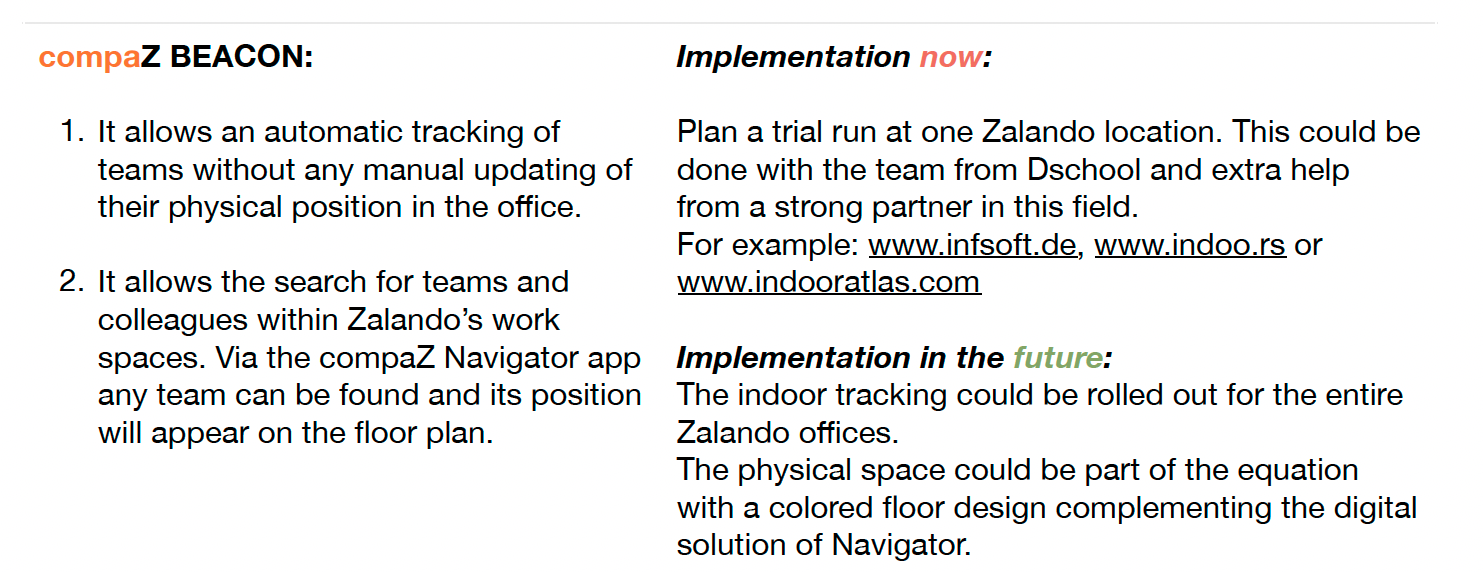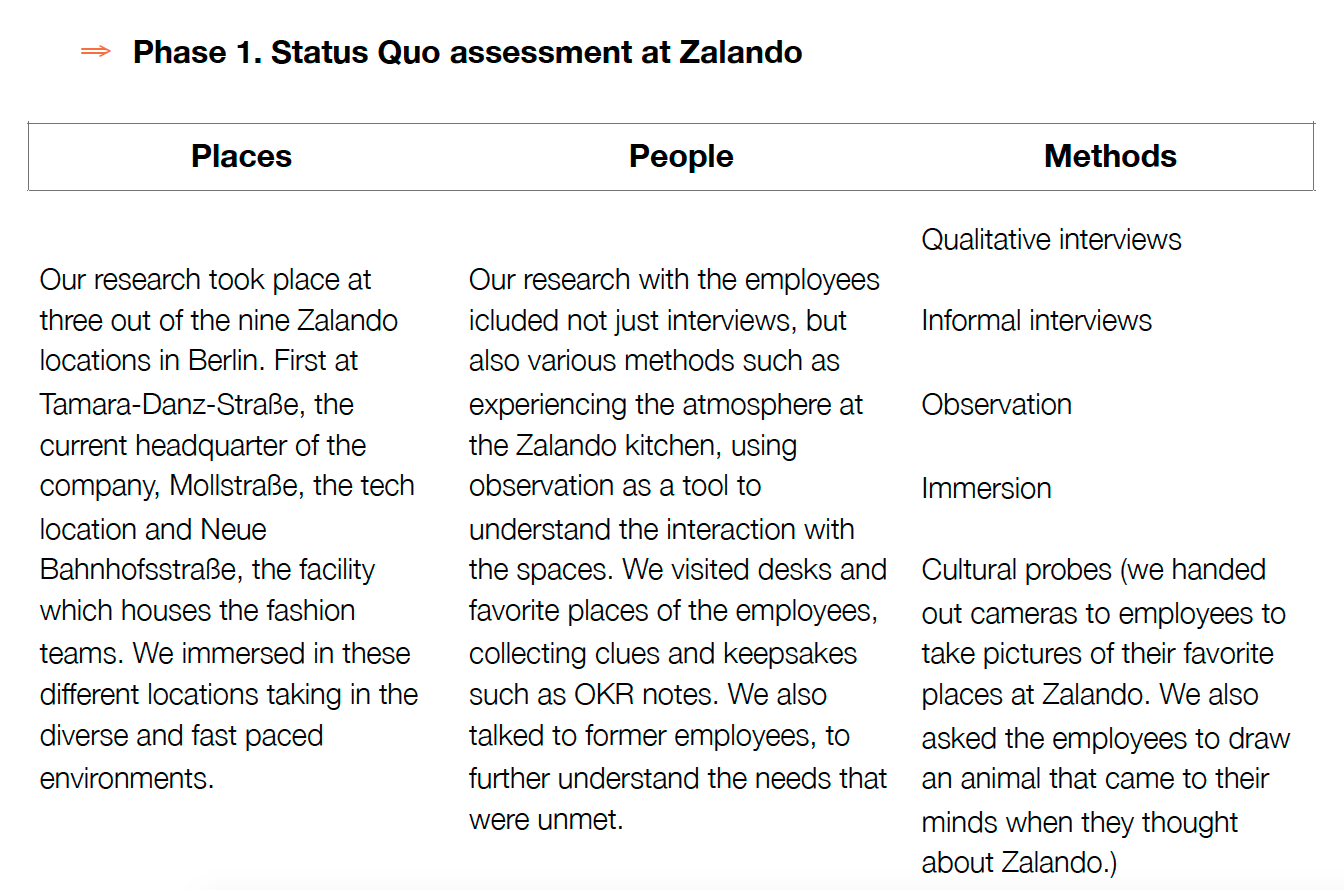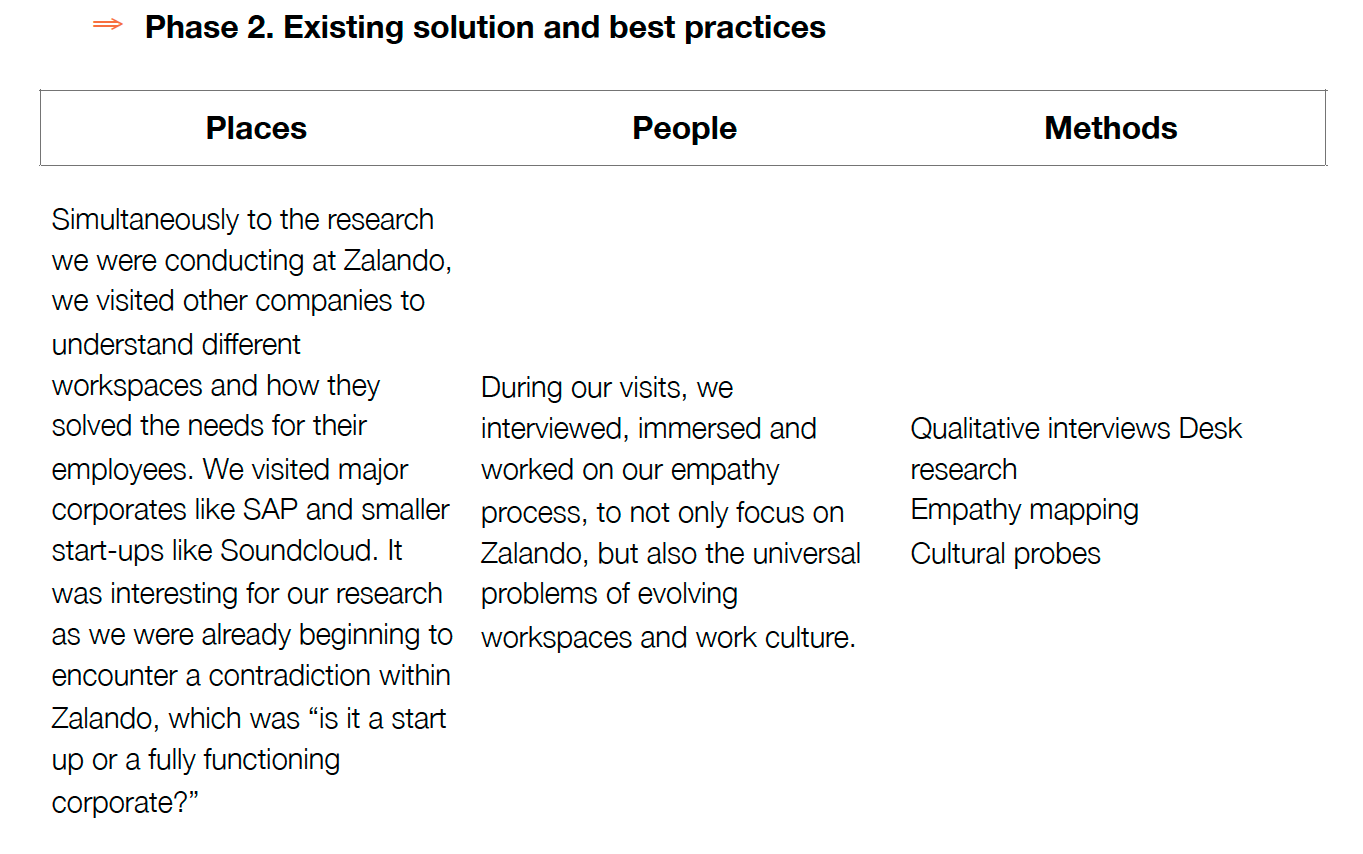compaZ: Reimagining Workspace Growth
My Role: Design Thinking Consultant
Timeline: 6 Months
Objective: Leveraging the design thinking process, our aim is to develop a solution that adeptly addresses workplace growth challenges, empowering our client to flourish amidst the evolving landscape of the future of work.
Introduction
"In 2016, Zalando faced significant challenges as one of Europe's fastest-growing startups and e-commerce retailers. Operating across 10 locations throughout Europe, their offices embraced an open-concept, hot-desking environment. Additionally, they were pioneering remote teams and work-from-home flexibility to unite teams scattered across Berlin and Europe.
The Real Estate department, our client, grappled with the constantly evolving environment and the complex challenge of connecting their employees. Recognizing the emergence of a new work culture, they understood that the workspace itself was undergoing transformation. Their primary challenge, a wicked design problem, centered on the future of work. Seeking structure and solutions, they turned to us to employ the design thinking process."
Goals and Objectives:
To strategize and implement solutions that address Zalando's evolving work culture and the challenges posed by dispersed teams, remote work, and the changing nature of the workspace, ultimately fostering connectivity and productivity among employee
My Role:
As a design thinking consultant within a multidisciplinary team of five experts, I contributed specialized knowledge in business management and strategy. My role was pivotal in spearheading the development of the Compaz-Navigator solution. This involved creating wireframes and mapping out user journeys to ensure a user-centric approach.
Through collaborative efforts and co-creation sessions with stakeholders, I facilitated the synthesis of diverse perspectives into actionable insights. My contributions were instrumental in aligning the solution with Zalando's objectives and addressing the challenges posed by the evolving work culture and dispersed teams."
The Solution
The compaZ- Beacon
The compaZ- Response
The Process
We used storytelling to really empathise with our Person Max’s problem space. This helped visually articulate and increase empathy.
These clusters, or "Fields of Opportunity," represented common themes or shared challenges among the data sets. Leveraging these insights, we embarked on the ideation process, harnessing the power of the "how might we" question framework to generate actionable solutions that addressed multiple data points within each cluster.
Brainstorming
Testing and AHA Moments
Ratings were perceived negatively; testers found them distracting and preferred their absence.
Users expressed a desire for the app to prioritize action or work mode upon opening, with push notifications for updates.
While individual tracking was initially considered, feedback suggested it may not be universally desired. However, users expressed openness to it if it aided space navigation. As a compromise, optional individual tracking was implemented with a toggle function.
The compaZ- Navigator
compaZ-Navigator
CompaZ is a comprehensive solution that addresses diverse workplace needs seamlessly. Its core feature, the CompaZ Navigator, enables users to locate specific spaces like quiet rooms, libraries, or prayer rooms tailored to their activities or work modes. Additionally, users can book meeting rooms in advance and check real-time space availability. CompaZ Response integrates user feedback, fostering continuous improvement. With its built-in system, CompaZ Navigator facilitates team location through the CompaZ Beacon, providing real-time data on both teams and available spaces. Overall, CompaZ offers an intuitive, scalable solution for corporations seeking real-time space management solutions across multiple locations.
Methods Highlighted
Personas
User Journey Map
Field of Opportunities
Setting the Stage:
We began by immersing ourselves in the insights gathered from testing and feedback sessions. This involved reviewing AHA moments, potential additions to the CompaZ Navigator, and other key findings.
Divergent Thinking:
Leveraging the "Fields of Opportunity" framework, we encouraged open-ended exploration and generated a multitude of ideas. Each team member contributed their unique perspectives, building upon the foundation laid out by the insights.
Idea Generation:
Inspired by the AHA moments, we explored diverse possibilities, from removing ratings to implementing offline orientation solutions like colored lines or areas on the ground. We also brainstormed add-on functionalities for the CompaZ Navigator, such as transportation booking features and guest registration capabilities.
Convergent Thinking:
Following the ideation phase, we employed techniques like clustering and prioritization to organize our ideas. By grouping related concepts together, we identified common themes and areas of opportunity.
Refinement and Selection:
With a plethora of ideas on the table, we focused on refining the most promising concepts. We considered factors such as feasibility, alignment with Zalando's objectives, and potential impact on user experience.
Prototype Development:
Armed with a curated selection of solutions, we moved forward with prototyping. This involved translating our ideas into tangible representations, such as wireframes, mockups, or even physical prototypes for offline orientation solutions like colored lines on the ground.
Iterative Feedback Loop:
Throughout the process, we continuously sought feedback from stakeholders and end-users. This iterative approach allowed us to refine our prototypes based on real-world insights and user validation.
Finalizing Solutions:
After multiple iterations and rounds of feedback, we arrived at a set of finalized solutions ready for implementation. These solutions not only addressed the identified challenges but also reflected the creativity and collaborative efforts of our team during the brainstorming stage.
Roads Not Taken
Implementation of colored lines or areas on the ground for offline orientation within the building. These visual cues, tangible and analog in nature, designate functional areas, team spaces, and work modes, enhancing workspace navigation.
Additional functionalities:
Booking options for transportation such as cars, parking spaces, or bikes.
Guest registration capabilities for both internal and external visits.
Real-time updates on the Zalando shuttle bus schedule.























